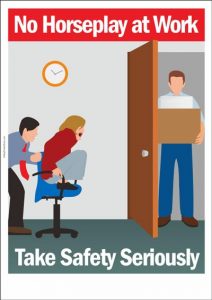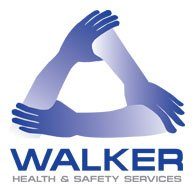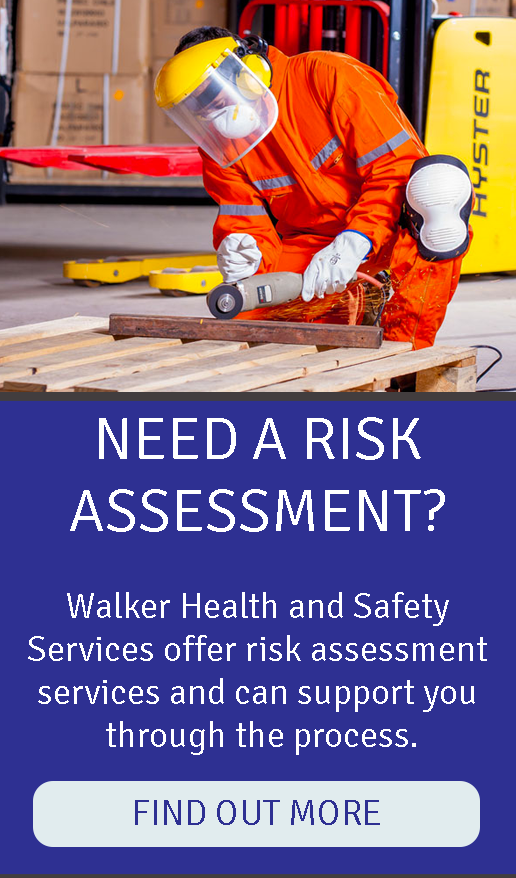
No Horseplay at Work
Rough, boisterous play or pranks in the workplace can have serious consequences. We look at key cases involving practical jokes at work and offer tips on how to prevent horseplay.
What is horse play?
Playing around, racing, grabbing, thoughtless vehicle operation, social pressure, harassment, and unauthorised contests are activities often encouraged by ‘practical jokers’ who pressure other colleagues to get involved. Playing jokes and having fun with colleagues can break up the day, provide stress-relief and make work more interesting, however horseplay can take this too far and put workers at risk.
Is it a health and safety issue?
Cases involving horseplay are common in industrial workplaces such as construction sites, and often where forklift trucks are used. But other cases have included pharmacies, hospitals and offices where pranks such as pulling out a chair has resulted in injury. Regardless of the sector, it is management’s responsibility to ensure all employees have access to a safe, respectful and harassment-free place to work.
The Health and Safety at Work Act 1974 does not specifically discuss horseplay but does make requirements for employees regarding health and safety.
Section 7 of the Act requires employees to ‘take reasonable care for the health and safety of himself and of other persons who may be affected by his acts or omissions at work’.
Section 8 requires that no person shall intentionally interfere or misuse anything provided in the interests of health, safety, and welfare. These duties extend to avoiding silly or reckless behaviour, and those who fail to comply with these duties may make themselves liable to be prosecuted.
However, acts that are not directly related to work, and are more of a personal nature will not be within scope, such as an employee assaulting a supervisor because he believed the supervisor had stolen his wallet.
It is most likely that employees will be prosecuted under section 7 where they have shown a reckless disregard for health and safety, and such disregard has resulted in serious risk.
Who is responsible?
It is a common misconception among employees that health and safety is the sole responsibility of the employer and if an accident or incident were to occur due to horseplay, that resulted in the injury of another person, it would be the employer that would have full responsibility. However, pranks at work that injure or threaten to injure another person may be the subject for individual prosecution against the person responsible. The law of vicarious liability has been steadily expanding, but there are areas where responsibility is still unlikely to arise on the part of the employer.
Last month IOSH magazine reported on Chell v Tarmac [2020] EWHC 2613, the latest decision to demonstrate that it will be difficult for an employee to succeed where they have been the victim of a practical joke played on them by a colleague.
Employers cannot rule out that horseplay at work can result in injury and there are cases where they can be held liable for the actions of their employees. To help prevent this, they need to have appropriate policies and procedures in place relating to horseplay that informs employees of the consequences of inappropriate behaviour at work and set out clearly what is considered acceptable and unacceptable behaviour.
Tips to prevent horse play.
Employees should:
• not engage or participate in any type of unsafe behaviour or horseplay, initiate it, or get pressured into participating in it.
• follow all regulations and work rules to ensure the safety of individuals or other employees.
• ensure protective equipment is used properly and operating machinery is in good repair and does not present a hazard.
• report those behaving in an unprofessional or unsafe way to a supervisor or manager.
Managers should:
• provide a safe and healthy work environment for all employees.
• take all precautions necessary to protect the safety and health of employees.
• outline policies against workplace horseplay in your employee manual
• educate and train employees on workplace safety.
• be an example of professionalism and not engage in any inappropriate behaviour or horseplay.
Contact us if you require further information.














